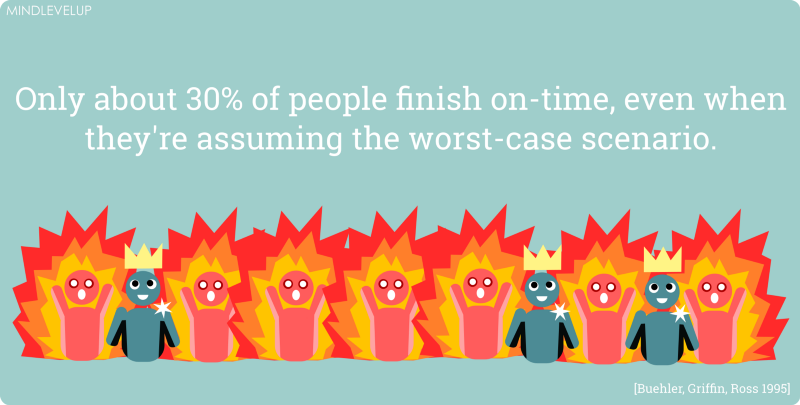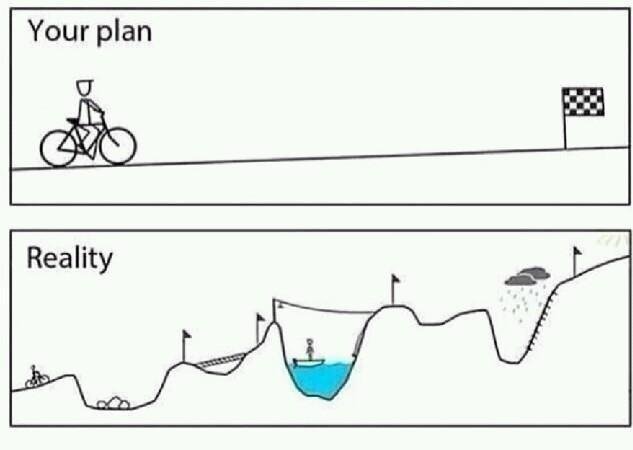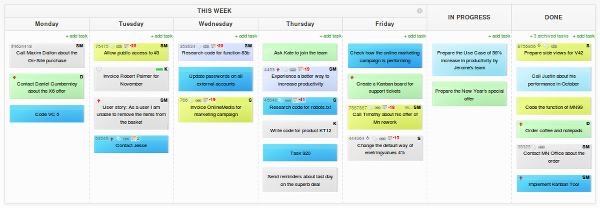It’s late Friday, and your to-do list has four items that are all due within the next hour. When you planned out your week, the workload seemed realistic, but in the end you somehow over-promised and under-delivered.

We all have a tendency to overestimate our capabilities, while at the same time we underestimate how long it will take to complete a task. However noble our intentions are to take on more work, our inability to accurately predict our productivity sometimes leaves us scrambling.
By understanding the science behind why we overestimate our capabilities, we can develop a smarter approach that counteracts our planning biases to create manageable workloads and get more done.
Why We’re Incapable of Predicting Our Productivity
Human beings are consistently bad at estimating how long it will take to complete tasks.
We all have a bias in our thinking that makes us underestimate how long projects will take even after we’ve completed similar tasks. It’s called the planning fallacy, a subconscious phenomenon that everyone is susceptible to.
The idea was first proposed in a 1979 paper by Daniel Kahneman and Amos Tversky. In their famous 1994 study, they asked university students to estimate how long it would take to finish their theses.

The average estimate was 33.9 days. The students also estimated 27.4 days if everything went as well as it possibly could, and 48.6 days if everything went poorly. The average actual completion time was 55.5 days, with only about 30% of the students completing their thesis in the predicted time frame.
The planning fallacy often causes us to agree to an unrealistic workload with unrealistic deadlines. This leaves us feeling optimistic early on, but as time goes by, the impending deadlines cause panic. We lose focus, and our productivity suffers.
How Your Optimism Fuels Planning Fallacy
Your burning desire to be productive and succeed are causing you to fail.
One of the reasons we unknowingly fall into this trap is that we like to assume the best-case scenario. We’re confident in our abilities and expect a successful result. We are blind to what might go wrong, even when we have prior experience of unexpected problems and distractions.
The science behind this thought process is called optimism bias, which causes us to believe that we are at a lesser risk of experiencing obstacles during our project. While optimism is usually seen as a positive attribute, in the case of planning your workload, it can cloud your judgment.

Scientists believe there’s an evolutionary explanation for our optimism. Without it, our awareness of mortality would have hindered the daily activities needed for survival. Knowledge of death forced our brains to develop a tendency for irrational optimism for the sake of survival.
Recent studies involving brain scanning found that our neurons encode desirable information that enhances optimism but fail at incorporating negative information. When we hear that someone wins the lottery, our brains are wired to think that we can win, too. But when someone is in a bad accident, we don’t think the same will happen to us.
Your desire to exceed expectations and help your company succeed can be counterproductive. As you take on more work than you can handle, you will eventually miss deadlines, let your team down and feel discouraged.
How To Counteract Your Planning Biases
A general awareness of your cognitive biases isn’t enough to prevent them from influencing your productivity. Even when we try to estimate for the worst case scenario, we still overestimate our capabilities about 70% of the time.
Here are three practical ways that help take the guesswork out of planning your workload:
- Play Poker With Your Colleagues
The planning fallacy phenomenon only occurs in the assessment of your own workload—not someone else’s.
We are more realistic and often pessimistic when we estimate our colleagues’ ability to deliver. A simple and effective way to work smarter is to use a group estimating technique with your colleagues, such as Planning Poker. Planning poker is a game designed to help estimate workload and productivity.
Here’s how you can use it:
- Step One: Each player is given eight cards using a Fibonacci sequence of 0, 1, 2, 3, 5, 8, 13, and 21. Uncertainty in estimating increases with large numbers, which is why there are more lower numbers. Every number represents an amount of effort and time.
- Step Two: Describe your project or task to the team. Everybody holds up a card at the same time showing the level of effort and time that they believe it will require.
- Step Three: Members with the lowest and highest estimates explain why they chose their scores and may be able to tell you why a certain task is actually easier or harder because of unexpected barriers or hiccups.

- Segment and Prioritize Your To-Do List
The more items you have on your to-do list, the more the possibility that you’ll run into something unexpected increases, which will affect your entire workload. By developing a to-do list that prioritizes tasks, segments larger tasks into subtasks, and allocates time to each item, you can reduce the effects of the planning fallacy.
This method is called task segmentation. Studies have found that it reduces the planning fallacy because the summation of estimates for the subtasks more accurately represents the time it should take to complete the entire task.
Here’s how to create detailed to-do list segmented first by priority and then by time:
- Step One: Prioritize based on the value of each task. Tasks that have the greatest impact are listed first. Be descriptive and use action verbs for each task. For example, instead of “finish blog” try “finalize outline and finish writing blog #15”.
- Step Two: Break down the larger tasks into subtasks and assign time to each subtask.
- Step Three: Organize your tasks into three lists: a 90-day calendar, a weekly project list, and your daily to-do list. As a rule, never put more than three tasks on your daily list.
3. Use Data From Past Projects To Predict the Future
Your segmented to-do list is valuable in predicting how much time a project will take, but it can be even more useful if it’s created and managed within a digital tool.
Using a software-based solution to manage your workload will help keep you on schedule and automatically track your progress. By tracking the progress of each task, you create a data story that will be helpful in predicting future projects of similar scope.

Kanban charts, which are found in many tools like Airtable, give you a visual perspective of your to-do list and enable you to add more detail to each task. Keeping a record for each task is important for understanding the true scope of each task and documenting unforeseen barriers that occur.
Don’t Trust Your Brain To Work Smarter
We can’t completely stop our subconscious minds from cognitive biases like the planning fallacy. These supposed flaws in our thinking actually help us when making quick decisions. But they can also have an adverse effect on our thought processes without us realizing it.
Working smart starts with precise planning when taking on more work for a given time period. By developing methods to counter your biases and using the right tools, you will improve your ability to estimate the right amount of work and get more done.
P.S. If you liked this article, you should subscribe to our newsletter. We’ll email you a daily blog post with actionable and unconventional advice on how to work better.
